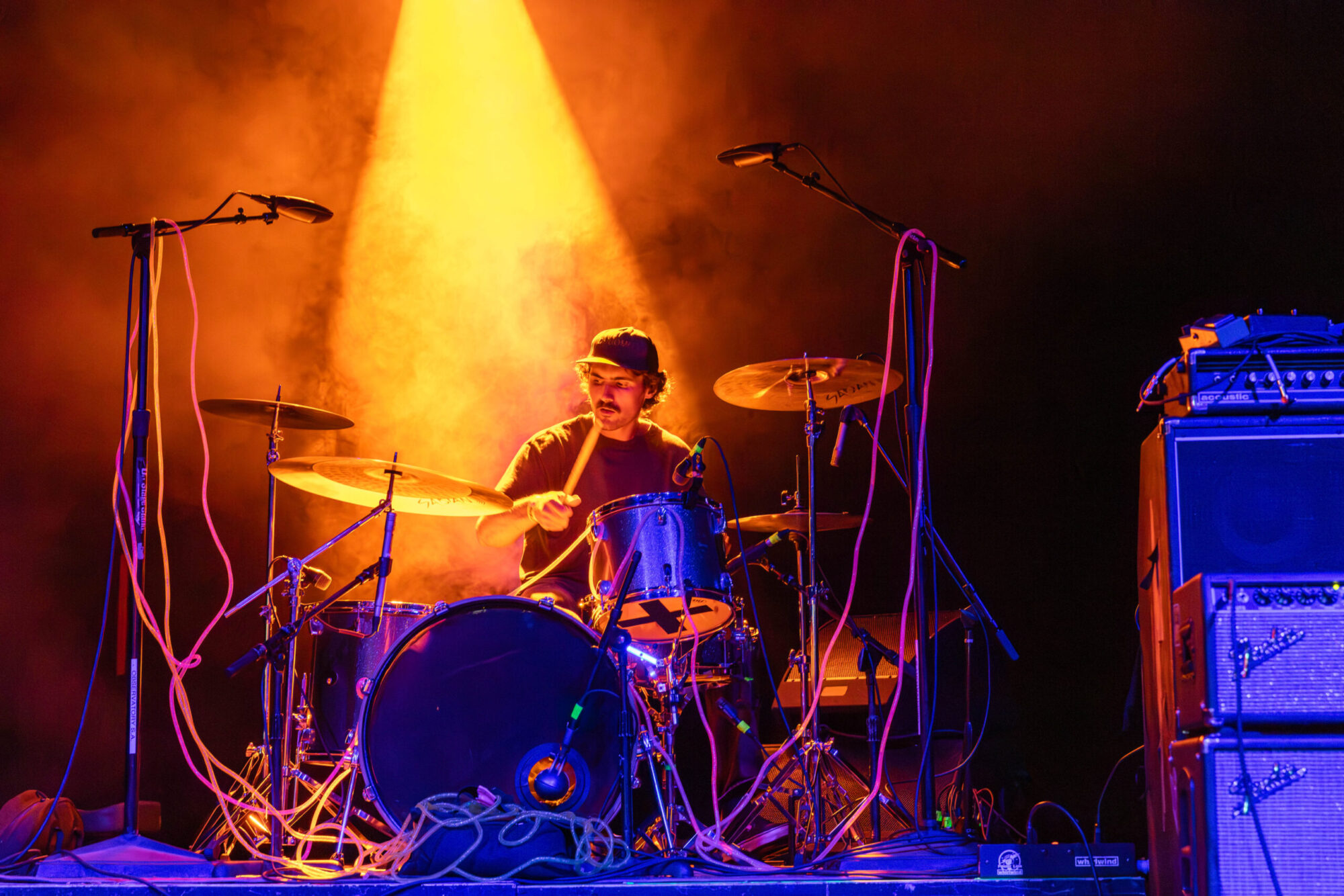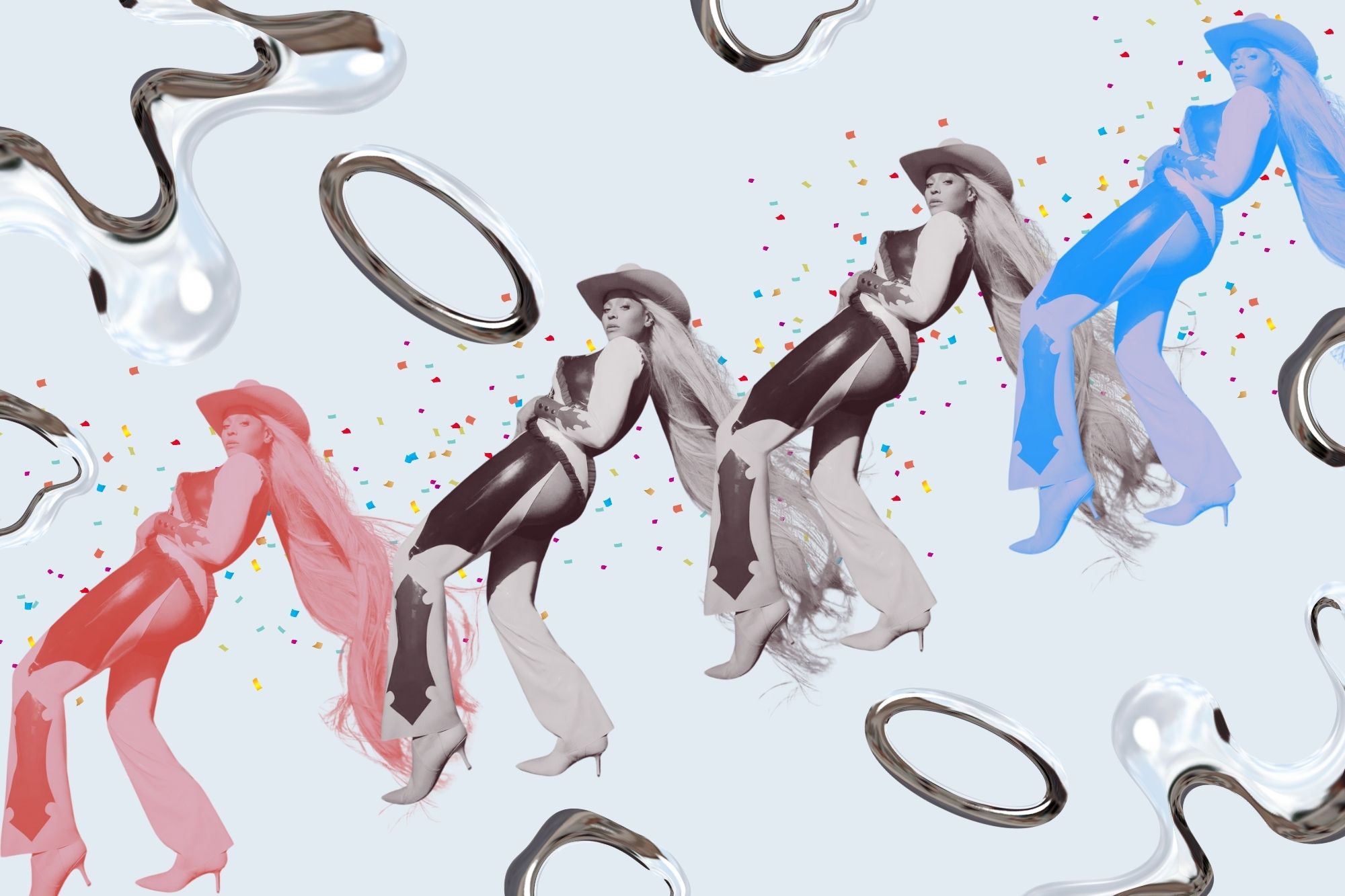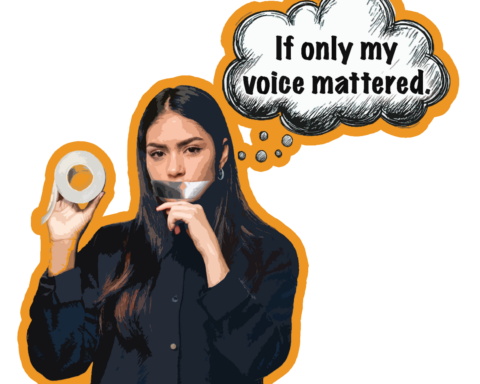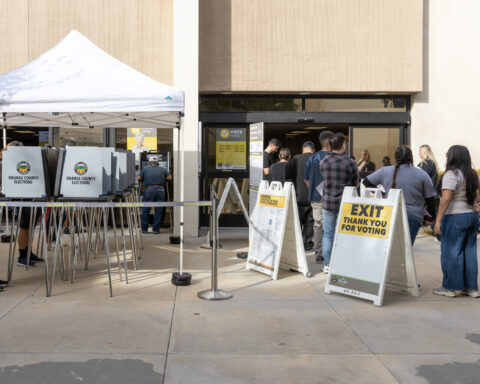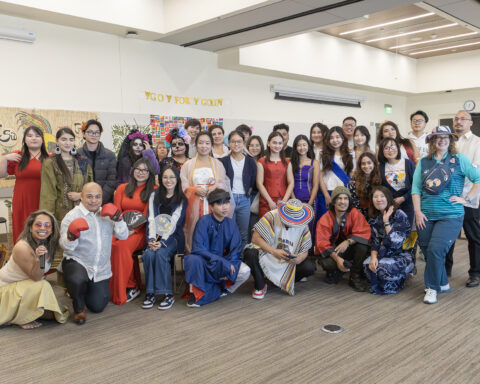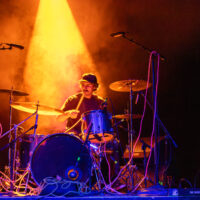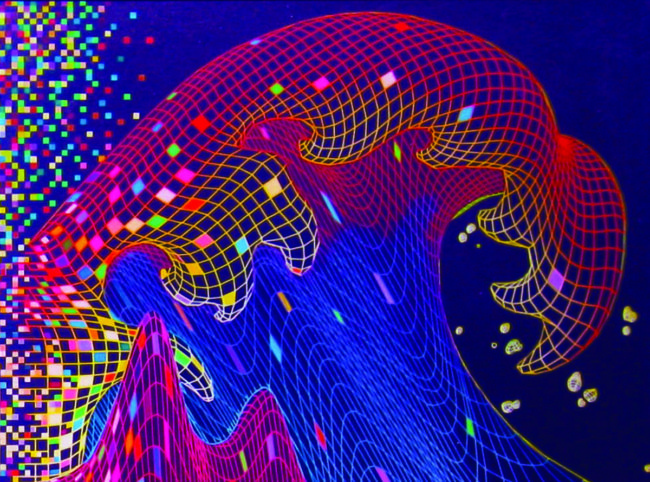
First, there is silence. Then, a syrupy wave of synthesizer keys and jangling beats bounces in. It begins slowly before starting its patient ascent. The intensity builds, each click of the key and each clunk of the percussion gaining momentum. A voice interrupts: “It’s your move,” it beckons. It is a smooth, sexy and sensual invitation – enticing as it is hypnotic. “Make a move,” it pleads with a subtle pang of desperation, beneath a sound that wouldn’t be out of place in a 1980s doctor’s office or on an early ‘90s elevator ride.
The mounting intensity reaches its breaking point, the climax. “I’m giving up/on trying/to sell you things/that you ain’t buying,” the voice croons before the descent begins. The vocals distort into an eerie shuffle of chaotic echoes and loops. The instrumental slows down, as if its syrupy flow was thickening. Soon, it sinks, solidifying into a mass of vapid noise.
This is the song “リサフランク420 / 現代のコンピュー,” translated as Lisa Frank 420 / Contemporary, a surreal and alluring track from creator Macintosh Plus, made by slowing down and reorganizing a sample of Diana Ross’ 1984 hit “It’s Your Move.” It is an anthem for the internet-born and bred electronic-music genre of Vaporwave.
Created and propagated entirely in an underground online universe over the last half decade, Vaporwave has developed a signature personality founded upon principles of sampling, nostalgia and individuality. It’s a genre defined by its amorphous, anonymous presence on the internet and its growing, increasingly fragmented popularity is only beginning to emerge offline.
Vaporwave began in the early 2010s among users of websites such as Tumblr, Reddit and other internet communities where people began tweaking songs from the ‘70s all the way to the early 2000s, with an emphasis on lounge music, elevator music and smooth jazz.
The music promotes a standard for so-called aesthetics, depicting Renaissance sculptures, ‘90s internet imagery, cyberpunk computer renderings and Japanese kanji script.
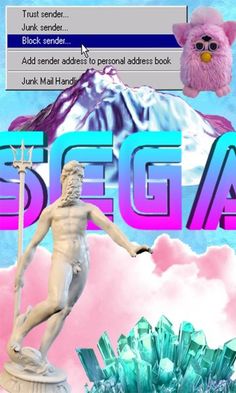 “Originally it was [about] finding the right tracks to slow down or to chop up or add effects to,” said John Zobele, the Pittsburg, Penn.-based founder and owner of the popular Vaporwave netlabel Business Casual.
“Originally it was [about] finding the right tracks to slow down or to chop up or add effects to,” said John Zobele, the Pittsburg, Penn.-based founder and owner of the popular Vaporwave netlabel Business Casual.
“Once moving onto other albums or projects, it started developing on not just the sample you used, but the sample you used in the context of the album. Putting together different samples on different tracks to create a cohesive story — an album that works on top of being entirely samples.”
In addition to sampling, another defining feature of Vaporwave is its appeal to nostalgia, both through the music—which originally sought to revive songs from the ‘80s and ‘90s no one had heard about—and the art that accompanies its albums and videos, which religiously incorporates vintage imagery.
“Everyone is tired of hearing pop tracks on the radio. They hear something that hearkens back to their childhood but is still something new that they can call their own,” Zobele said.
New fans might enter the realm of Vaporwave for the aesthetics or nostalgia, but they stick around because they find something more.
When asked how a Vaporwave track is made, Zobele chuckled and said one word: message. Vaporwave is like water, he says, and each listener is the glass with which the water changes shape to match.
“You can’t just get anything and try to sample and try to make it Vaporwave,” says Carlos Ibanez, a computer science student at Santa Ana College and active Vaporwave listener. “It sends out a message.”
Despite the persistent theme of nostalgic images and retro samples, Vaporwave has evolved over the years, with bedroom producers across the globe fracturing themselves into smaller sub-genres, releasing physical cassettes and even, in the case of producer Oneohtrix Point Never, performing songs born on the internet for live audiences around the U.S.
Today, different sub-genres of Vaporwave have materialized—from Vaportrap to Ambient to Simpsonwave, which plays the music alongside edited Simpsons clips—each garnering their own micro-followings. Zobele’s Business Casual label is known for Future Funk, which primarily uses ‘70s and ‘80s funk and disco tunes.
For Ibanez, Vaporwave is the message of mellow vibes, throwbacks and chill moods. For Zobele, it is more personal. It is about triumphs, defeats and love lost. It’s about being human.
For Santa Ana College student Carlos Duarte, who is an active listener in the realm of remixed and sampled music, Vaporwave brings the message of comfort.
“It reminds me of summer, when I was younger, because you didn’t have to worry about anything,” he said. “It feels like it tells me everything is going to be all right.”
- Court of Appeals Affirms Lawsuit Against District - May 7, 2018
- State Retirement Agency Rejects Chancellor’s New Salary - April 30, 2018
- Newport Beach and Orange Oppose Sanctuary Law - April 11, 2018



